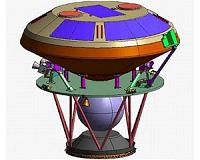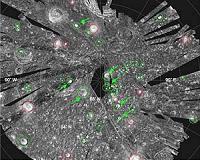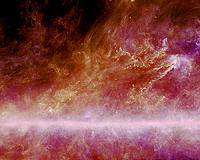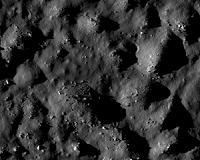|
 Zen And The Art Of Space Maintenance
Zen And The Art Of Space MaintenanceLos Angeles CA (SPX) Mar 25, 2010 The challenge for the makers of Hubble 3D was how to somehow turn repairing a twenty year old beat-up piece of space technology into a dramatic and compelling story for a broad audience. Of course that piece of the technology inserted as the main character of the story is the several billion dollar Hubble Space Telescope that has a long and controversial history, beset by programmatic delays, bureaucratic infighting, technical setbacks and substantial cost overruns. The story revolves around ... read more |
. |
|
|
Free Space, Earth, Energy And Military Newsletters - Delivered Daily |
| . | . |
 Australia commissions Cray supercomputer | .. |
 Life Without Water And The Habitable Zone | .. |
 The Mystery Of Moonwater | .. |
 A Galactic Desktop Of Cold Dust | .. |
 Newly Discovered Planet Could Hold Water |
| .. |
Cassini Shows Saturnian Roller Derby London, UK (SPX) Mar 19, 2010
London, UK (SPX) Mar 19, 2010The seemingly serene orb of Saturn is in fact a gas giant with extraordinary patterns of charged particles and rough and tumble roller derbies for rings. Such are the findings of NASA's Cassini spacecraft since its arrival at Saturn in 2004 - they are combined in two review papers to be published in the March 19 issue of the journal Science. "This rambunctious system gives us a new feel fo ... more CoRoT-9b - A Temperate Exoplanet  Bonn, Germany (SPX) Mar 18, 2010
Bonn, Germany (SPX) Mar 18, 2010CoRoT-9b, a Jupiter-sized exoplanet thats orbits its star every 95 days, is the latest discovery of the CoRoT satellite, a project in which the German Aerospace Center (DLR) is a participant. "This exoplanet stands out by virtue of its 'normality'. It is a very close approximation of the planets in our own solar system," says Professor Heike Rauer from the DLR Institute of Planetary Resear ... more NASA's Spitzer Unearths Primitive Black Holes  Pasadena CA (SPX) Mar 18, 2010
Pasadena CA (SPX) Mar 18, 2010Astronomers have come across what appear to be two of the earliest and most primitive supermassive black holes known. The discovery, based largely on observations from NASA's Spitzer Space Telescope, will provide a better understanding of the roots of our universe, and how the very first black holes, galaxies and stars came to be. "We have found what are likely first-generation quasars, bo ... more |
.. |
 Planck Sees Tapestry Of Cold Dust  LRO Camera Releases Science Data From First Six Months  Instant online solar energy quotes Solar Energy Solutions from ABC Solar |
.. |
|
|
Free Space, Earth, Energy And Military Newsletters - Delivered Daily |
|
|
. |
 New Planck Images Reveal Large-Scale Structure In The Milky Way
New Planck Images Reveal Large-Scale Structure In The Milky WayParis, France (ESA) Mar 18, 2010 New images from ESA's Planck mission reveal details of the structure of the coldest regions in our Galaxy. Filamentary clouds predominate, connecting the largest to the smallest scales in the Milky Way. These images are a scientific by-product of a mission which will ultimately provide the sharpest picture ever of the early Universe. ESA's Planck microwave observatory - the first European mission designed to study the Cosmic Microwave Background (CMB) - has begun the second of four sky surveys, wh ... read more |
| The contents herein, unless otherwise known to be public domain, are Copyright 1995-2010 - SpaceDaily. AFP and UPI Wire Stories are copyright Agence France-Presse and United Press International. ESA Portal Reports are copyright European Space Agency. All NASA sourced material is public domain. Additional copyrights may apply in whole or part to other bona fide parties. Advertising does not imply endorsement, agreement or approval of any opinions, statements or information provided by SpaceDaily on any web page published or hosted by SpaceDaily. Privacy statement |
| Previous Issues | Mar 24 | Mar 23 | Mar 22 | Mar 19 | Mar 18 |